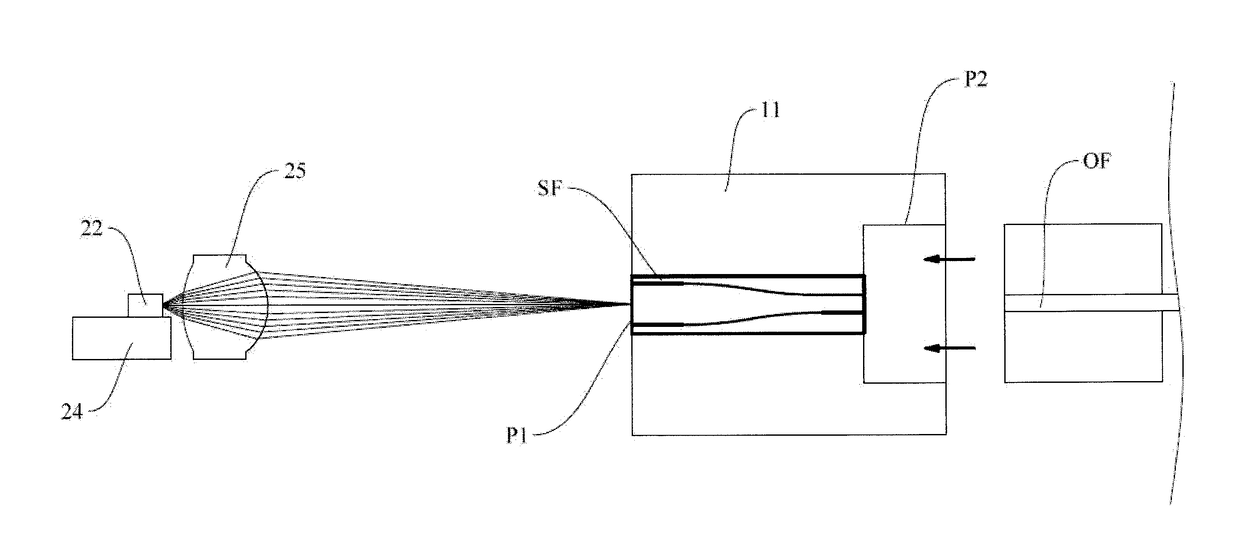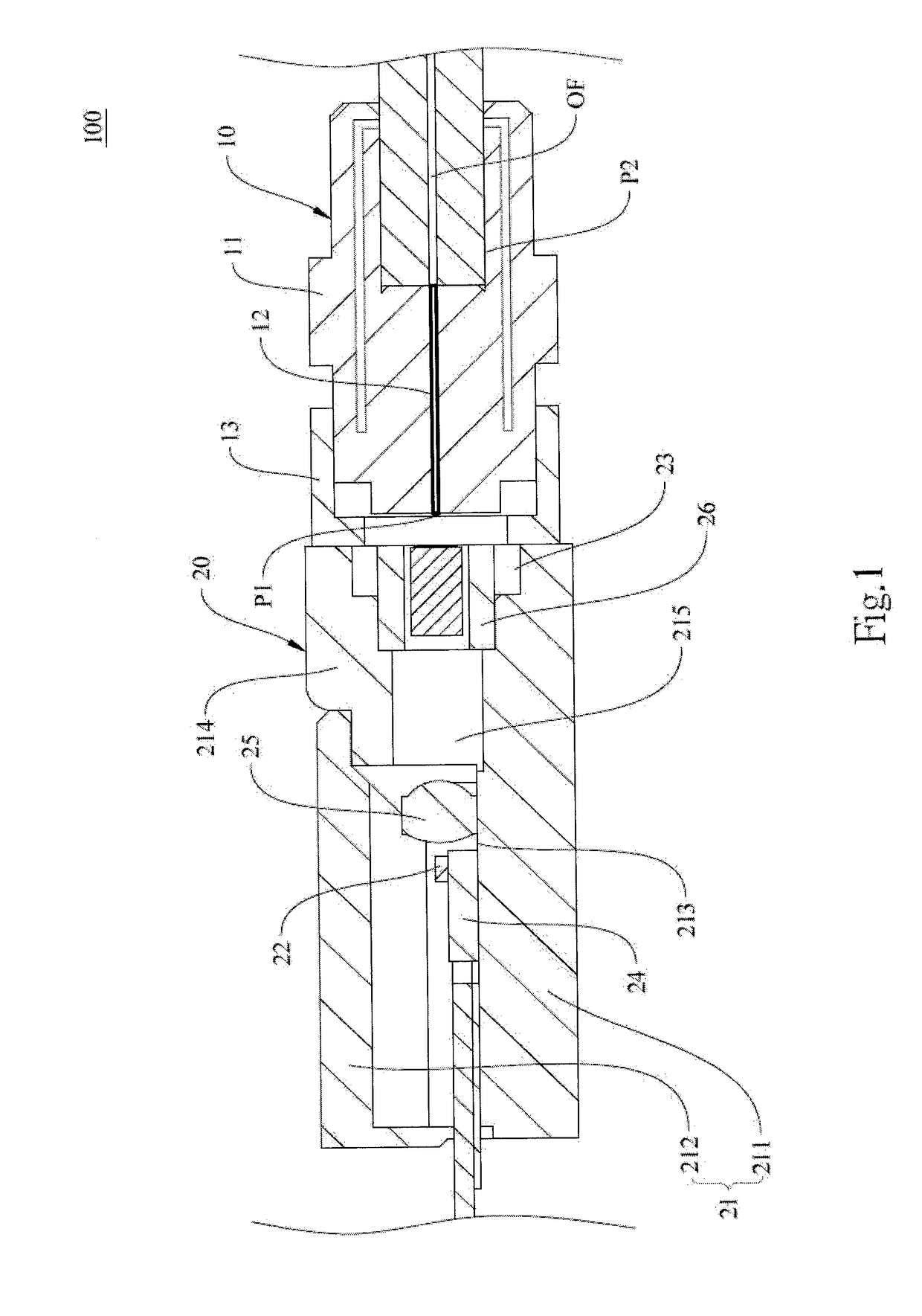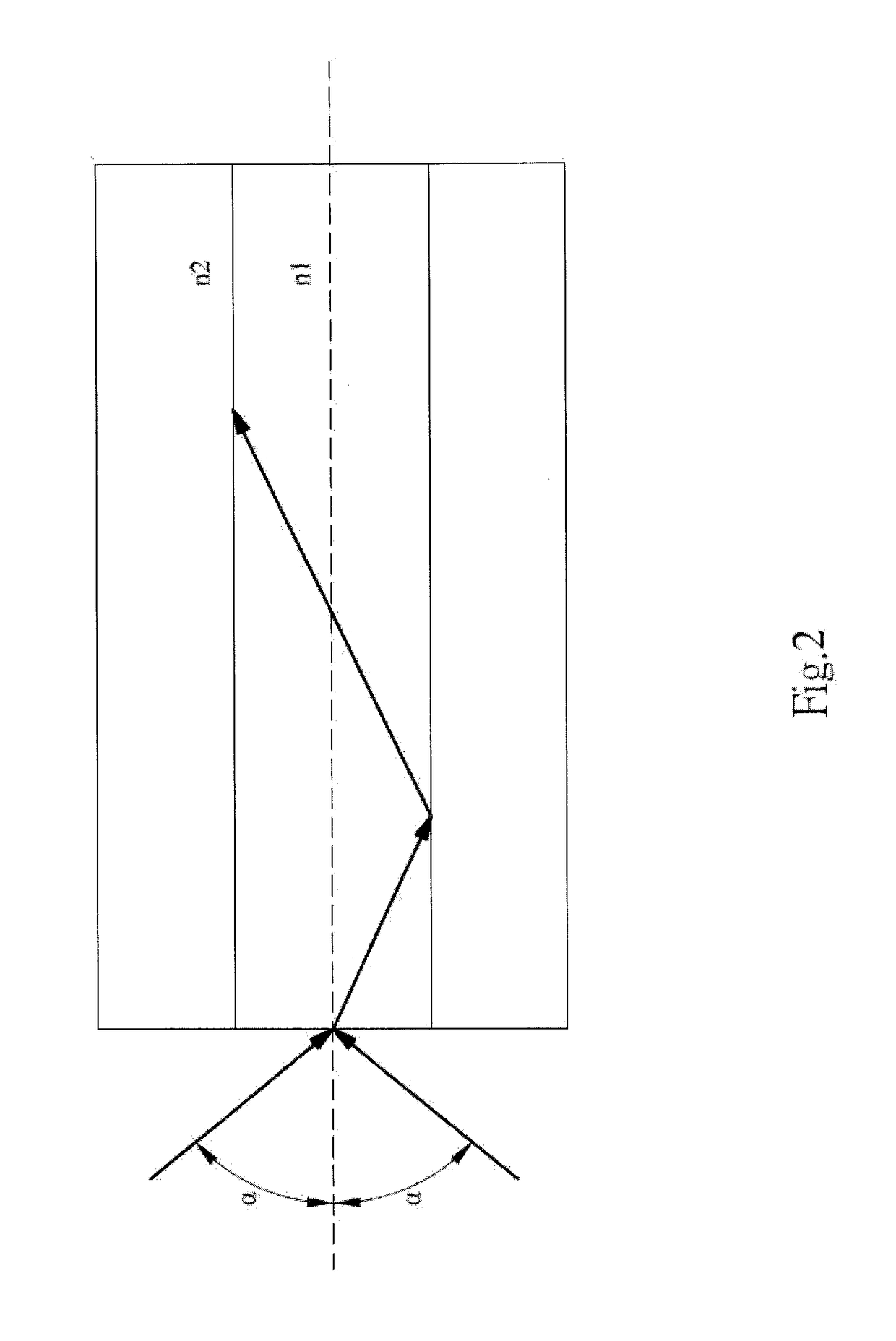Optical communication module configured for enhancing optical coupling efficiency
a communication module and optical coupling technology, applied in the field of optical communication modules, can solve the problems of reducing the yield of the resulting module, limiting the tolerance of optical coupling positions, and affecting the efficiency of optical coupling,
- Summary
- Abstract
- Description
- Claims
- Application Information
AI Technical Summary
Benefits of technology
Problems solved by technology
Method used
Image
Examples
first embodiment
[0056]Referring to FIG. 3 and FIG. 4 respectively for a functional block diagram and a schematic sectional view of the present invention.
[0057]In this embodiment, the dual-core optical fiber has a light-receiving section and a light-coupling section, which are joined together by a fused conical taper method to form a single unit cone optical fiber as a light-coupling section. To carry out the fused conical taper method, two optical fibers have to be prepared, and in this embodiment, an optical fiber with a relatively large numerical aperture (e.g., an MMF or a special SMF) and an optical fiber whose core diameter is not larger than or is close to that of the external optical fiber OF or whose mode field diameter is equal to that of the external optical fiber OF (e.g., an SMF) are required. The to-be-joined portions of the two optical fibers are fused together by being subjected to a temperature above 1400° C. but not higher than 1700° C. The fused and subsequently solidified portion...
second embodiment
[0062]Another preferred embodiment of the present invention is described below with reference to FIG. 5 and FIG. 6, which are a functional block diagram and a schematic sectional view of the second embodiment respectively.
[0063]Unlike the previous embodiment, in which a single tapered optical fiber SF is fitted into the through hole 12 of the receptacle body 11, the dual-core optical fiber in the preferred embodiment includes a coupling structure provided between the light-receiving section IF1 and the light-coupling section IF2 such that a linked optical fiber IF with different numerical apertures or core diameters is formed. More specifically, optical fibers of different numerical apertures or core diameters are fitted into the through hole 12 to serve as the light-receiving section IF1 and the light-coupling section IF2 respectively. The coupling structure between the light-receiving section IF1 and the light-coupling section IF2 is configured to concentrate the light beam propag...
third embodiment
[0068]Referring now to FIG. 7 for a schematic sectional view of the present invention.
[0069]This embodiment is different from the previous ones only in the way in which the coupling structure of the linked optical fiber is implemented, so the remaining portions will not be described repeatedly.
[0070]In this embodiment, the linked optical fiber JF has a light-receiving section JF1 and a light-coupling section JF2. The end of the light-receiving section JF1 that is adjacent to the light-coupling section JF2 has a concave sintered surface JF11. On the opposite side of this concave surface JF11, the light-coupling section JF2 has an end adjacent to the light-receiving section JF1 and formed with a concave sintered surface JF21. A condensing lens JF3 is provided between the concave surfaces JF11 and JF21 to focus the laser beam in the light-receiving section JF1 on the light-coupling section JF2, thereby reducing the coupling loss between the light-receiving section JF1 and the light-cou...
PUM
 Login to View More
Login to View More Abstract
Description
Claims
Application Information
 Login to View More
Login to View More - R&D
- Intellectual Property
- Life Sciences
- Materials
- Tech Scout
- Unparalleled Data Quality
- Higher Quality Content
- 60% Fewer Hallucinations
Browse by: Latest US Patents, China's latest patents, Technical Efficacy Thesaurus, Application Domain, Technology Topic, Popular Technical Reports.
© 2025 PatSnap. All rights reserved.Legal|Privacy policy|Modern Slavery Act Transparency Statement|Sitemap|About US| Contact US: help@patsnap.com



